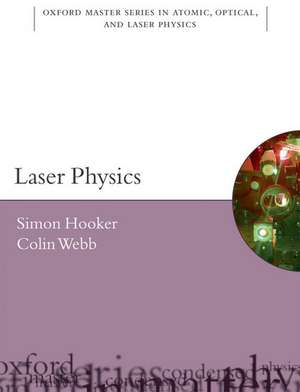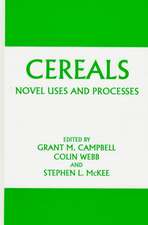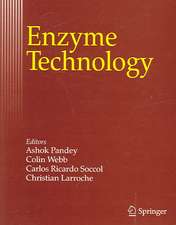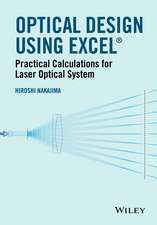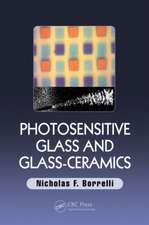Laser Physics: Oxford Master Series in Physics, cartea 09
Autor Simon Hooker, Colin Webben Limba Engleză Paperback – 5 aug 2010
| Toate formatele și edițiile | Preț | Express |
|---|---|---|
| Paperback (1) | 443.43 lei 32-37 zile | |
| Oxford University Press – 5 aug 2010 | 443.43 lei 32-37 zile | |
| Hardback (1) | 977.82 lei 32-37 zile | |
| OUP OXFORD – 4 aug 2010 | 977.82 lei 32-37 zile |
Din seria Oxford Master Series in Physics
- 10%
 Preț: 274.60 lei
Preț: 274.60 lei - 8%
 Preț: 283.13 lei
Preț: 283.13 lei -
 Preț: 237.06 lei
Preț: 237.06 lei - 9%
 Preț: 279.44 lei
Preț: 279.44 lei - 8%
 Preț: 282.56 lei
Preț: 282.56 lei -
 Preț: 280.12 lei
Preț: 280.12 lei - 8%
 Preț: 279.56 lei
Preț: 279.56 lei -
 Preț: 296.66 lei
Preț: 296.66 lei - 7%
 Preț: 304.33 lei
Preț: 304.33 lei - 8%
 Preț: 283.98 lei
Preț: 283.98 lei - 7%
 Preț: 313.95 lei
Preț: 313.95 lei - 10%
 Preț: 273.47 lei
Preț: 273.47 lei -
 Preț: 281.49 lei
Preț: 281.49 lei - 8%
 Preț: 281.15 lei
Preț: 281.15 lei - 9%
 Preț: 279.16 lei
Preț: 279.16 lei -
 Preț: 282.21 lei
Preț: 282.21 lei - 10%
 Preț: 271.96 lei
Preț: 271.96 lei -
 Preț: 311.01 lei
Preț: 311.01 lei -
 Preț: 295.06 lei
Preț: 295.06 lei -
 Preț: 302.42 lei
Preț: 302.42 lei -
 Preț: 240.83 lei
Preț: 240.83 lei
Preț: 443.43 lei
Preț vechi: 499.66 lei
-11% Nou
Puncte Express: 665
Preț estimativ în valută:
84.85€ • 87.54$ • 70.81£
84.85€ • 87.54$ • 70.81£
Carte tipărită la comandă
Livrare economică 17-22 martie
Preluare comenzi: 021 569.72.76
Specificații
ISBN-13: 9780198506928
ISBN-10: 0198506929
Pagini: 604
Ilustrații: 314 b/w line and halftone figures
Dimensiuni: 190 x 247 x 30 mm
Greutate: 1.15 kg
Editura: Oxford University Press
Colecția OUP Oxford
Seria Oxford Master Series in Physics
Locul publicării:Oxford, United Kingdom
ISBN-10: 0198506929
Pagini: 604
Ilustrații: 314 b/w line and halftone figures
Dimensiuni: 190 x 247 x 30 mm
Greutate: 1.15 kg
Editura: Oxford University Press
Colecția OUP Oxford
Seria Oxford Master Series in Physics
Locul publicării:Oxford, United Kingdom
Recenzii
This textbook is well suited for advanced undergraduate and graduate students. It is written with the fine-tuned pedagogical style of master teachers, and it is replete with well-integrated figures and insightful problem sets at the end of each chapter.
There is no question in my mind that for expositional clarity and completeness this book far surpasses all the others I've seen. The authors are to be congratulated. I have little doubt it will be become the standard Laser Physics text against which all others will have to be judged (and mostly found wanting). The treatment of explanatory footnotes is superb; it immediately raised the question of why it wasn't done this way years ago? The ability to jot down notes in a truly generous margin is also a great feature. It's not only a textbook for students; from my point of view everyone working with lasers will find it useful. It may become the standard quick reference for lasers; the book everyone reaches for when a question comes up.
Very well-written while using a clear and concise style. Figures are plentiful and neatly printed...impressive array of topics. Laser Physics , by Hooker and Webb, is highly recommended as a text book and to practitioners seeking to review some of the basics.
Hooker and Webb have drawn on their vast experience of laser research to produce a textbook which is a real tour de force. The lucid treatment of fundamental laser physics in the early chapters is followed by a detailed account of modern laser materials and devices. This superb book will undoubtedly become an essential text for undergraduates and researchers alike.
This is an absolute tour de force in laser physics and is set to establish itself as a key undergraduate text in this topical area, however, it most certainly would not be out of place as an indispensible reference in the research laboratory. A comprehensive treatment is provided for the basic operation of a generic laser through to the characteristics of all the important modern laser systems and the key features such as single frequency operation, ultrashort pulse generation and measurement and application to non linear optics.
This is an extraordinarily complete and interesting textbook on lasers. It covers all main topics in laser physics, from historical ruby lasers to the latest developments in non-linear optics, ultra-short pulse generation and frequency combs. This vast subject is treated with a unique and tasty blend of fundamental physics, engineering considerations and practical applications. The agreeable presentation makes it possible to get to the main points at a glance. All useful fundamental concepts, from atomic to solid state physics, from electromagnetism to optics, are clearly introduced, making the whole book extremely self-contained. It will thus be useful for a large audience, from undergraduate students to their professors, who will particularly appreciate the wealth of interesting exercises at the ends of the chapters. It will also rapidly become a reference on state-of-the art laser techniques for researchers and engineers.
There is no question in my mind that for expositional clarity and completeness this book far surpasses all the others I've seen. The authors are to be congratulated. I have little doubt it will be become the standard Laser Physics text against which all others will have to be judged (and mostly found wanting). The treatment of explanatory footnotes is superb; it immediately raised the question of why it wasn't done this way years ago? The ability to jot down notes in a truly generous margin is also a great feature. It's not only a textbook for students; from my point of view everyone working with lasers will find it useful. It may become the standard quick reference for lasers; the book everyone reaches for when a question comes up.
Very well-written while using a clear and concise style. Figures are plentiful and neatly printed...impressive array of topics. Laser Physics , by Hooker and Webb, is highly recommended as a text book and to practitioners seeking to review some of the basics.
Hooker and Webb have drawn on their vast experience of laser research to produce a textbook which is a real tour de force. The lucid treatment of fundamental laser physics in the early chapters is followed by a detailed account of modern laser materials and devices. This superb book will undoubtedly become an essential text for undergraduates and researchers alike.
This is an absolute tour de force in laser physics and is set to establish itself as a key undergraduate text in this topical area, however, it most certainly would not be out of place as an indispensible reference in the research laboratory. A comprehensive treatment is provided for the basic operation of a generic laser through to the characteristics of all the important modern laser systems and the key features such as single frequency operation, ultrashort pulse generation and measurement and application to non linear optics.
This is an extraordinarily complete and interesting textbook on lasers. It covers all main topics in laser physics, from historical ruby lasers to the latest developments in non-linear optics, ultra-short pulse generation and frequency combs. This vast subject is treated with a unique and tasty blend of fundamental physics, engineering considerations and practical applications. The agreeable presentation makes it possible to get to the main points at a glance. All useful fundamental concepts, from atomic to solid state physics, from electromagnetism to optics, are clearly introduced, making the whole book extremely self-contained. It will thus be useful for a large audience, from undergraduate students to their professors, who will particularly appreciate the wealth of interesting exercises at the ends of the chapters. It will also rapidly become a reference on state-of-the art laser techniques for researchers and engineers.
Notă biografică
Simon Hooker's doctoral and early post-doctoral work in Oxford involved a study of novel line- and broadly-tunable vacuum ultraviolet (VUV) lasers optically-pumped by a molecular fluorine laser. In 1994 he moved to Stanford University to work with Prof. Steve Harris. He returned to the UK in 1996 to take up a Royal Society University Research Fellowship and to start a new research group in the Clarendon Laboratory. He joined the faculty of Oxford's Department of Physics in 2005; he was made Reader in 2006, and Professor in 2008.Colin Webb completed his D.Phil. at Oxford in 1964, the first research degree specifically on the topic of laser physics undertaken anywhere outside the USA. He was then recruited as a member of technical staff of Bell Laboratories, New Jersey, USA. He returned to Oxford University in 1968 to head the Laser group at the Clarendon Laboratory. In the 1970s he became a University Lecturer and Fellow of Jesus College. Until his retirement in 2002, Colin Webb was the ad hominem Professor of Laser Physics at the University of Oxford, and from 1995-1999 he was Head of Atomic and Laser Physics. He is a Fellow of the Optical Society of America serving as Director-at-Large from 1991-1994. In 1991 he was elected as a Fellow of the Royal Society, receiving its Clifford Paterson Medal and Prize in 1998. In January 2000 he was awarded an MBE for services to the UK Laser Industry.
